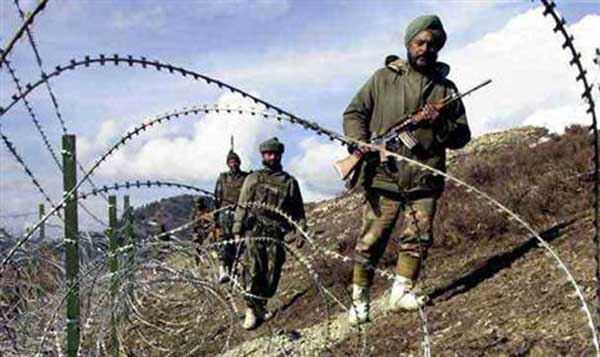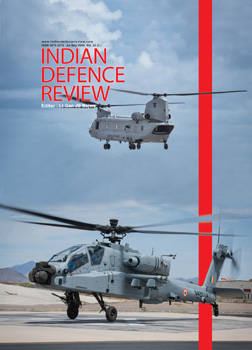Command of a unit is the last stage wherein a commander is directly dealing with and handling human resources and material. As he climbs up the professional ladder, his responsibilities increase and his focus should shift to managing the environment and troops/units under his command. Since the first escalation in rank is in command of a brigade, the commander is well advised to remember that he too was commanding a unit some years back, in perhaps a more comfortable environment. In fact, no professional senior officer must forget his time as a Commanding Officer and consequently, must empathise with those under his command. We all like to serve under commanders who are non-parochial, value fair play, create a level playing field under their command and guide their subordinate units in the right direction.
The best training a young officer gets is when his unit is deployed in an operational area…
Leadership and officer management are perhaps the most trite and hackneyed subjects for an article. Yet these form a very important aspect of military life and how one handles these delicate subjects can ultimately lead to defeat or victory in battle. There is enough material available in our libraries, in our teachings in Schools of Instruction and at the practical level of conducting matters military in our daily lives. However, in the present social milieu, I feel there is a need to go back to basics and revisit our best practices so as to ensure we retain the cohesiveness in the organisation.
Today, the issues relating to sound leadership are far more complex than what they were in earlier years. From the days when sons or kith and kin of royalty took to the profession of arms, the social milieu in today’s environment has altered the equation between the leader and the led to a very large extent, throwing up challenges which in times gone by, were more or less unheard of. The social structure and the representation in the intake into the Indian Army has considerably changed with the social gap between officers and men being visibly narrowed. The selection, training, development of the officer and his ability to gain the confidence and respect of his command assumes great importance. The leader must, therefore, accept that there a change in the environment and sound leadership needs to recognise and suitably adapt to this change.
Challenges of Leadership
The demands of leadership vary at various stages of an officer’s career. While the tenets and basic parameters by and large remain constant, certain attributes of leadership are more pronounced and applicable as one rises in rank. Take the case of an officer joining his unit after commission. He has fire in his belly and is highly motivated to earn a good name for himself and establish his credentials amongst his men, his peers and superiors. His first two to three years of unit life by and large, lay the foundation of his military career. So, how best can this young officer be trained and nurtured to become one worthy of his rank and status in uniform?
The demands of leadership vary at various stages of an officer’s career…
Though a lot depends on the attitude of the fresher, a great deal also depends on the commitment and capability of his seniors and mentors to undertake this onerous responsibility. Regrettably, shortage of officers in units, operational and peace time commitments, have deprived the young officer the opportunity of being put through the paces. However, where dynamic individuals are in command, they do find innovative methods and commitment to groom the young officers. In my experience, a young officer must be made to undergo all tasks expected of a soldier. He must rub shoulders with the men while at the same time adhering to the maxim of being friendly, but not familiar.
A good method is to put him through the basic training programme with the men including full-time attendance in various promotion cadres. I am tempted to go back in time of my early years in the battalion. Over five decades ago, my unit was stationed at Jaswant Garh in the erstwhile NEFA, presently Arunachal Pradesh. Incidentally, this place on the main Se La-Tawang axis has been developed into a beautiful memorial site in honour and memory of Jaswant Singh of 4 Garhwal Rifles who laid down his life fighting gallantly against the Chinese in 1962. Within a week of my reporting, I was put through the regimental history, a broad functioning of the branches of the unit offices and the ‘do’s and don’ts’ of regimental life followed by full-time attendance in a promotion cadre. This involved participation in all activities with the men, including physical training, games and social interaction at the end of the day. The result was that I learnt basic characteristics of the men and picked up their language to adequately converse with them.
After a couple of months, I was given independent charge of a platoon deployed at Bum La which in those days took a better part of two days to reach from the battalion headquarters. It was here that I picked up the nuances of junior leadership. It was an experience which held me in good stead throughout my career. I learnt the necessity of knowing every bit of information related to the men, including their family, details of their kith and kin as also their personal problems which all of us face at some point of time in our lives. I was not being intrusive, but merely trying to establish a rapport with the men. I learnt to share their privations when out on long range patrols or on other difficult chores in the inhospitable snowy terrain of the area.
Commanding a unit is the most challenging, demanding and yet most enjoyable period of an officer’s service in uniform…
I continued this practice as a sub-unit commander while also introducing a weekly interview of 15 to 20 men to update their documentation and conduct a frank interaction with them on a one-to-one basis. This gave me an excellent feedback on the administration and training of the sub-unit and helped me establish a good working relationship with the men. I feel every man must be made to feel to be an important part of the team and a stakeholder in the smooth functioning of the organisation. I am aware that today, the operational commitments and the shortage of officers in units may not give the Commanding Officer the luxury of training his officers, but several good practices can still be implemented in motivated units who have a mix of dedicated senior officers and a professional Commanding Officer. Remember, the best training a young officer gets is when his unit is deployed in an operational area.
In Command of a Unit
Command of a unit is perhaps a singular honour which every officer aspires for. It should be the culmination of ambition of an officer’s career and all that follows in promotions thereafter should be a bonus. This was the thumb rule passed on to us by our predecessors by deeds and word-of-mouth. However, human aspirations are insatiable and many a time we forget the golden rule of command. Commanding a unit is the most challenging, demanding and yet most enjoyable period of an officer’s service in uniform. No other command can give you the close interaction, responsibility and satisfaction which you are privileged to have in command of a unit.
The buck stops at the doorstep of the Commanding Officer and the good, bad and the ugly is rightly attributed to him. So what does it take to be a good Commanding Officer? I have deliberately avoided using the word ‘successful’, as it carries a tinge of ambition which relegates the importance of command of a unit. I am not going to labour into the qualities a Commanding Officer must possess as I assume and rightly so, that basic and essential requisites are there in a potential Commanding Officer, otherwise he has no business to be placed in command of troops. To my mind, a Commanding Officer upon assuming command, must evaluate the strengths and weaknesses of his command. If he is an indigenous product, the better it is. If not, then initial efforts have to be made to be accepted as a leader by the officers and men. He must be passionate and caring of his command and be fully committed and involved in the affairs of the unit.
Building up ‘favourites’ is a sure-shot prescription for ‘groupism’ and it can be disastrous for a unit…
Officers and men are very perceptive and genuineness displayed by the commanding officer will go a long way in enhancing the operational and administrative performance of a unit. What are the qualities subordinate officers look for in their Commanding Officer? From my experience, officers look up to a commander who is humane, accessible, stands up for what he feels is right, allows freedom of thought within laid down parameters of decency, accepts responsibility, is impartial and is totally committed to the operational and administrative aspects of the unit. While it is natural to have dependency on high performers, the Commanding Officer is well advised not to display any partiality towards such officers and men. Building up ‘favourites’ is a sure-shot prescription for ‘groupism’ and it can be disastrous for a unit.
Professional Qualities
The reader would notice that I have not touched upon professional qualities, as I believe that a majority of Commanding Officers have it in them and those who don’t are in a minority and their selection is perhaps attributable to aberrations in the system. During the Kargil War, I have seen how committed Commanding Officers were to lead from the front to achieve their objectives. Fortunately, except in one case, all Commanding Officers displayed remarkable leadership qualities to pave the way for victory in the war. The odd Commanding Officer who did not, was relieved of command and the second in command, who was empanelled for the next rank, was given command of the unit prior to attack and to his and his unit’s credit, performed remarkably well to win laurels for the battalion. The bottomline, therefore, lies in the age-old adage, that there are no good or bad units, there are only good and bad officers and it is up to the Commanding Officer to train and mould his team of officers into a well-oiled battle machine.
On relinquishing command, a period of eight to nine years is spent in staff appointments, attending courses or on study leave, before one picks up his next rank. This period should be used by professionals for introspection on their command tenure, its successes and failures and take stock of the shortcomings for self improvement. This period also gives one a wide exposure of the functioning of the Indian Army at various levels of command and perhaps gives one an insight into the minds of higher commanders with whom one comes into contact, the pressures they face and how astute commanders handle such pressures without compromising on basic values.
Command of a unit is the last stage wherein a commander is directly dealing and handling human resources and material. As he climbs up the professional ladder, his responsibilities increase and his focus should shift to managing the environment and troops/units under his command. Since the first escalation in rank is in command of a brigade, the commander is well-advised to remember that he too was commanding a unit some years back, in perhaps a more comfortable environment. In fact, no professional senior officer must forget his time as a Commanding Officer and consequently, must empathise with those under his command.






